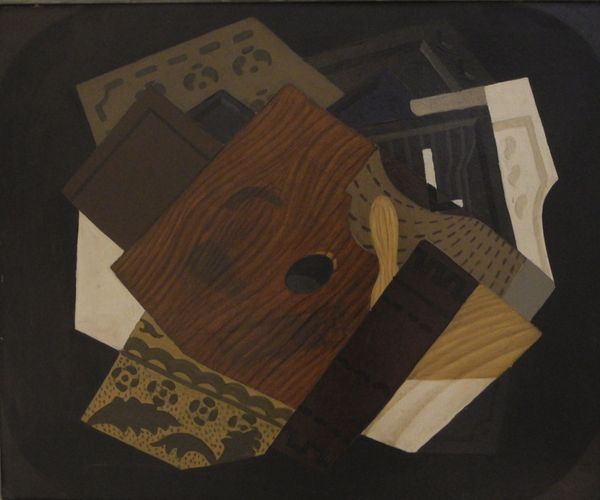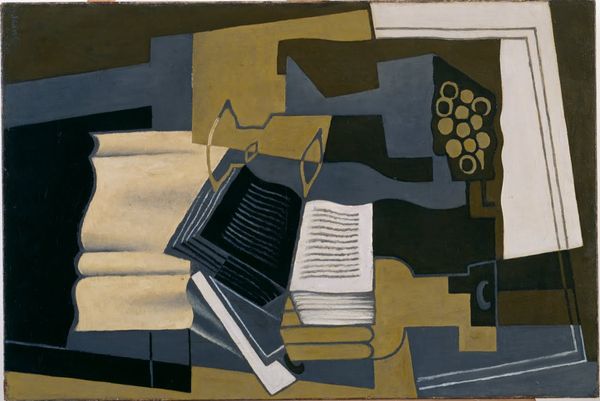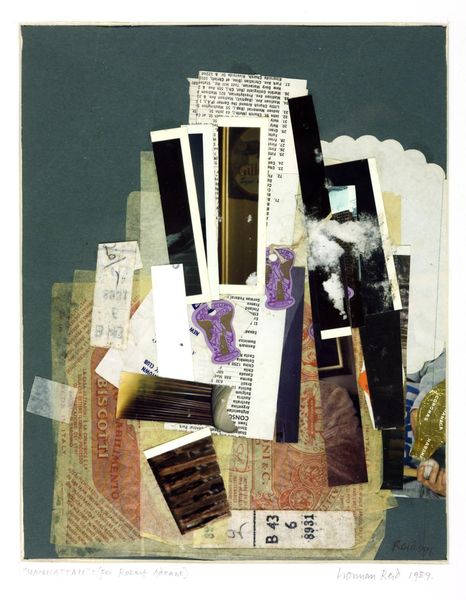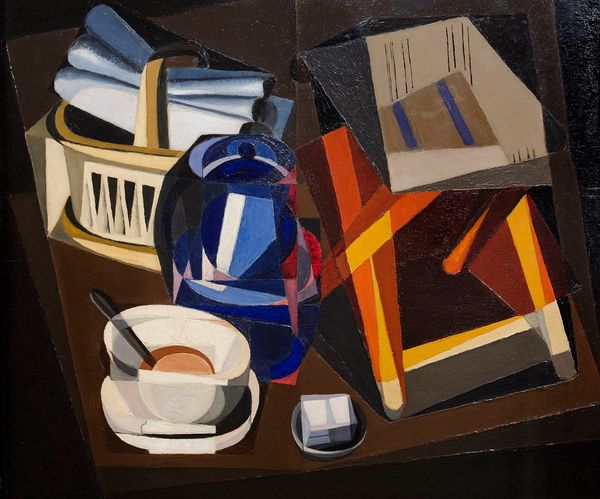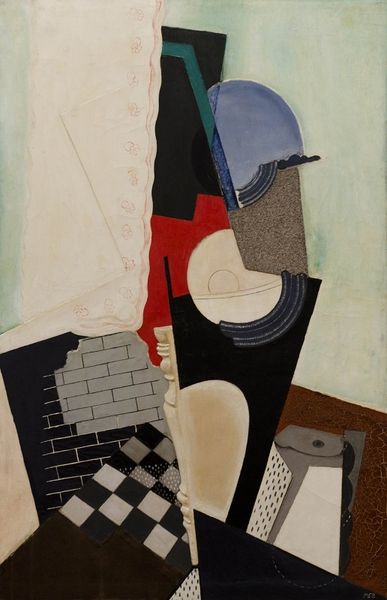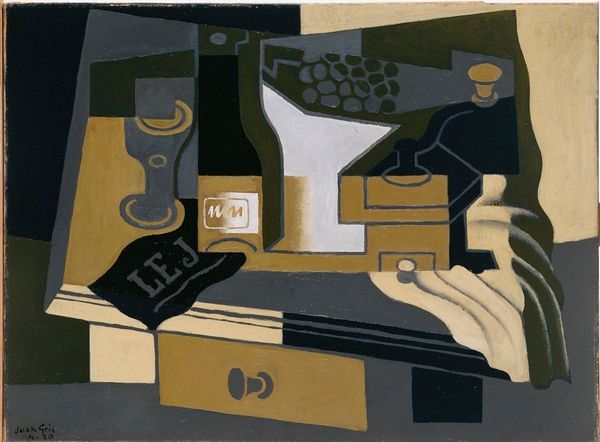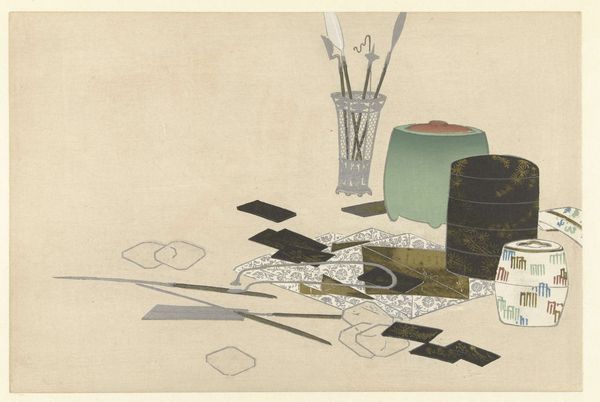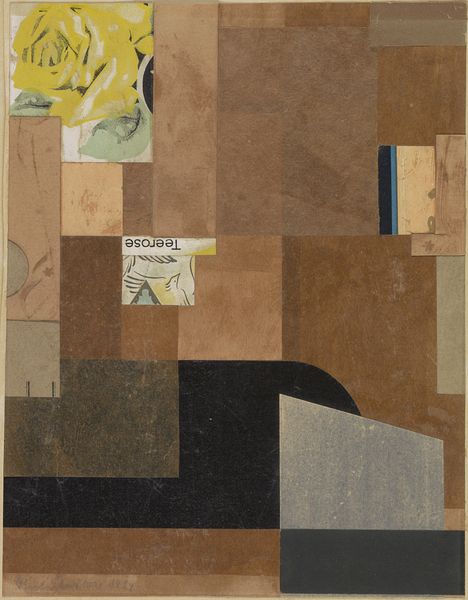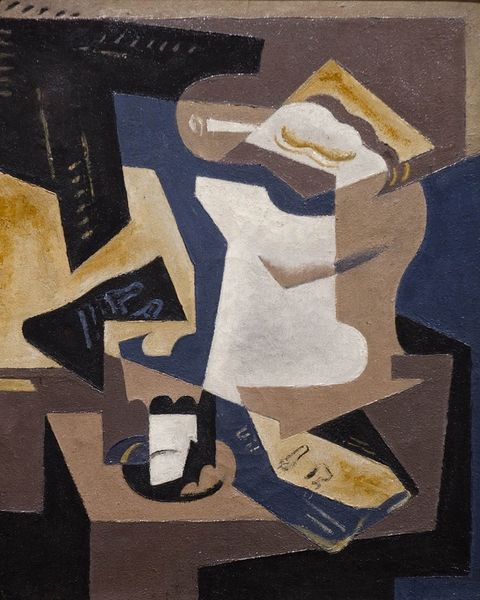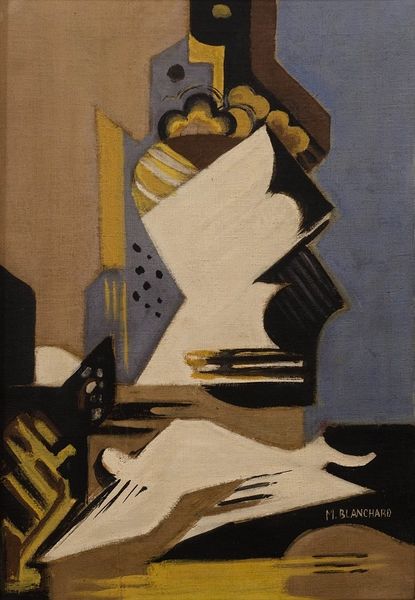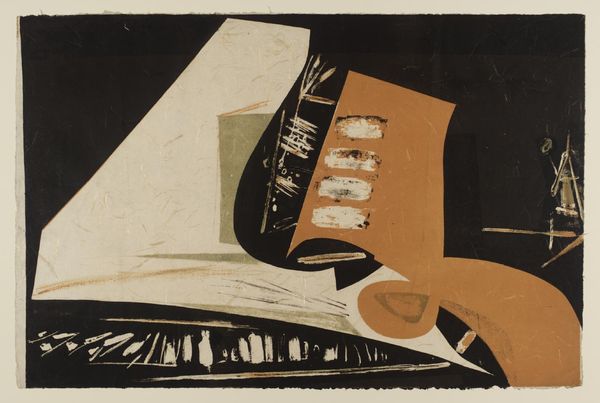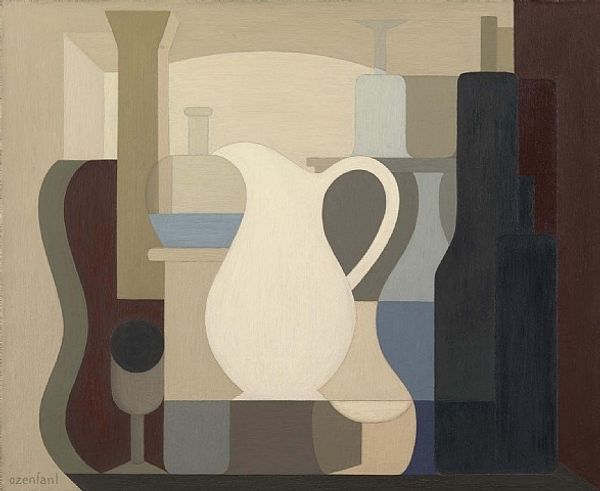
painting
#
cubism
#
painting
#
geometric
#
abstraction
#
modernism
Copyright: Public domain US
Editor: Here we have David Kakabadze's "Cubist Composition" from 1920. It's a painting, and what strikes me is how it uses familiar shapes in a way that almost feels like a puzzle. What do you see in this piece? Curator: I see a challenge to conventional representation, rooted in a revolutionary period. Cubism, emerging in the early 20th century, disrupted traditional perspectives. This piece, situated in that context, seems to dissect and reassemble everyday objects, almost as a mirror to the social fragmentation and rapid changes of the time. Note how the geometric forms interact. Do you see a possible critique of established orders, or perhaps a celebration of modern construction? Editor: I think I see what you mean about social fragmentation! The sharp edges and broken-up shapes make it seem like the painting is trying to show lots of different perspectives all at once. It is a big contrast to the smooth curves of nature in traditional art, and maybe it's trying to say something about the fast, sharp changes that were happening then. Curator: Precisely! Think about Kakabadze's cultural background, influenced both by European avant-garde movements and the sociopolitical upheavals in Georgia. How might these intersections—modernism clashing with national identity—shape his cubist interpretation? Editor: That’s interesting, because knowing that helps me see it not just as a formal experiment, but also as a product of cultural negotiation and political consciousness. I hadn't really considered the Georgian context before. Curator: Considering those historical and cultural layers allows us to engage with art beyond just aesthetics, prompting dialogues about identity and historical change. Editor: I learned a lot! I’ll never look at another Cubist painting the same way again! Thanks!
Comments
No comments
Be the first to comment and join the conversation on the ultimate creative platform.
